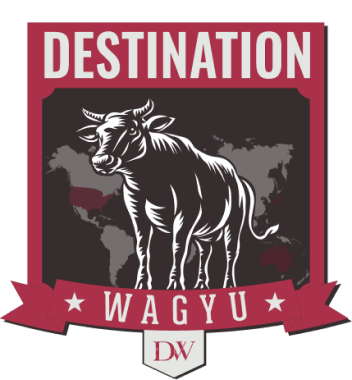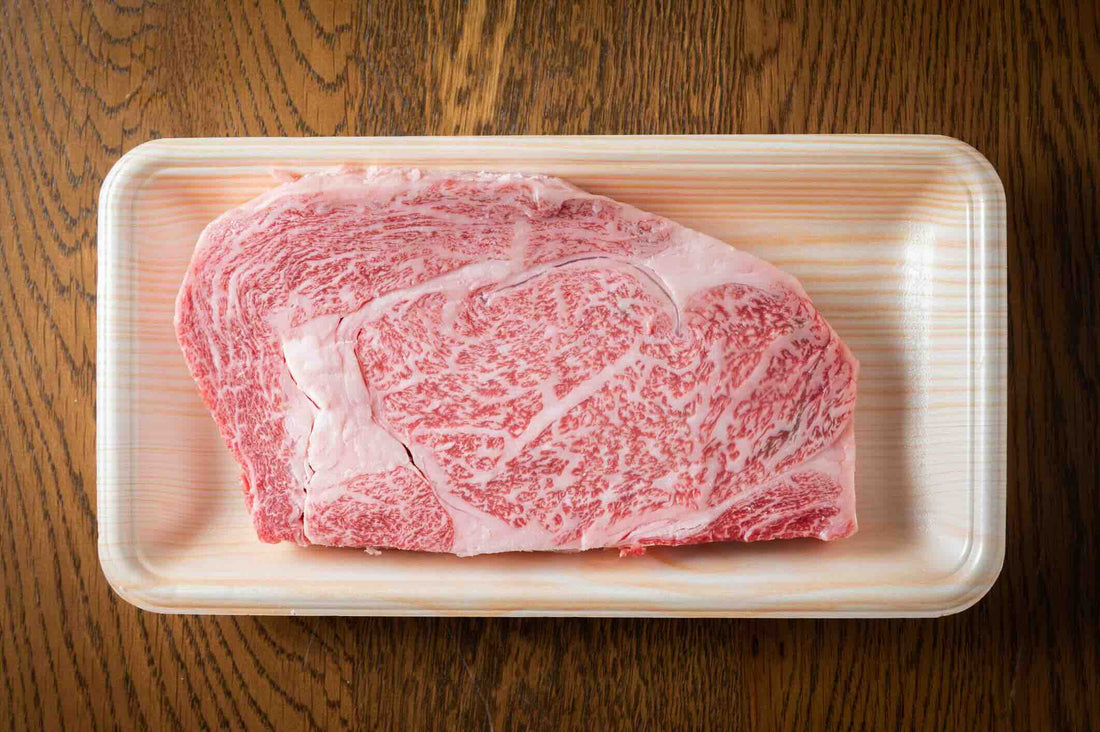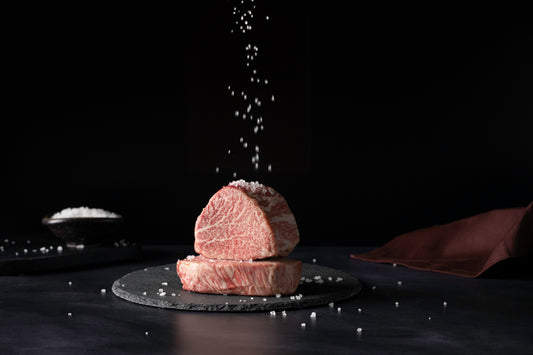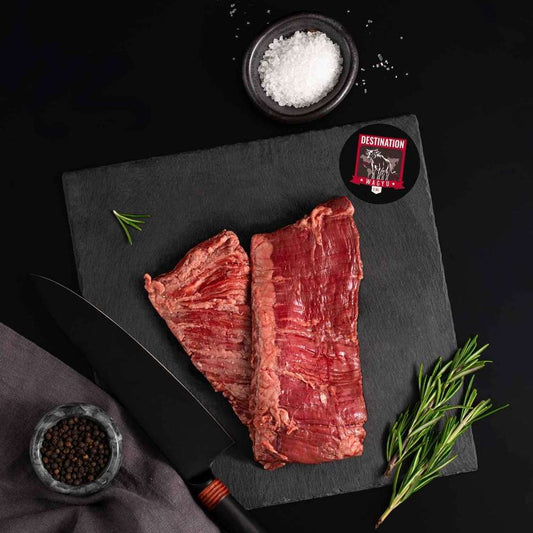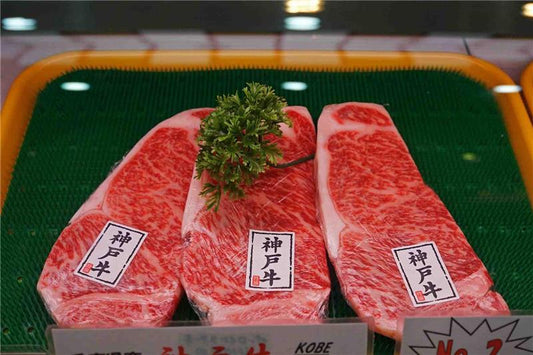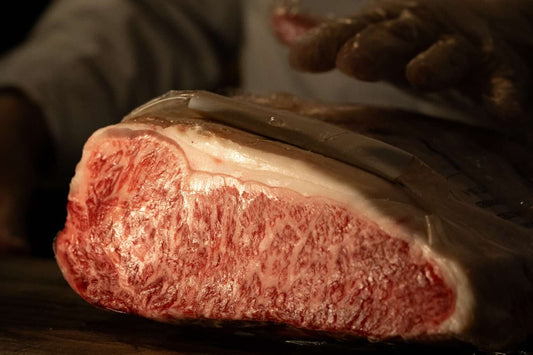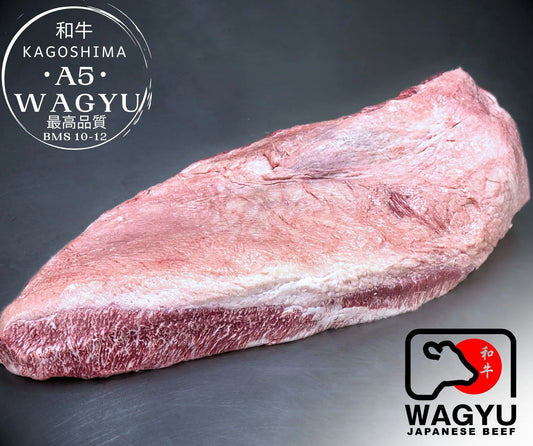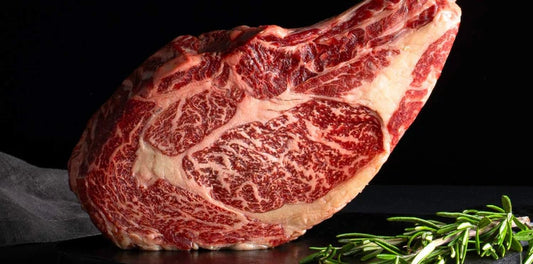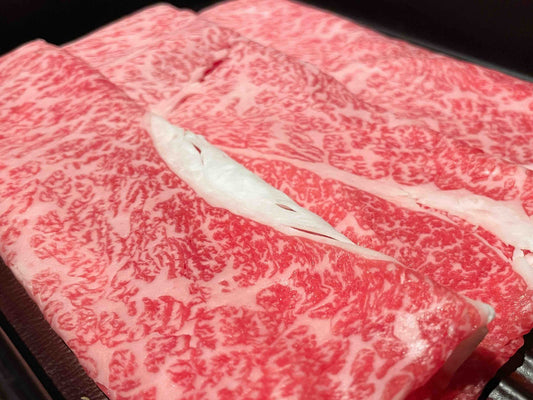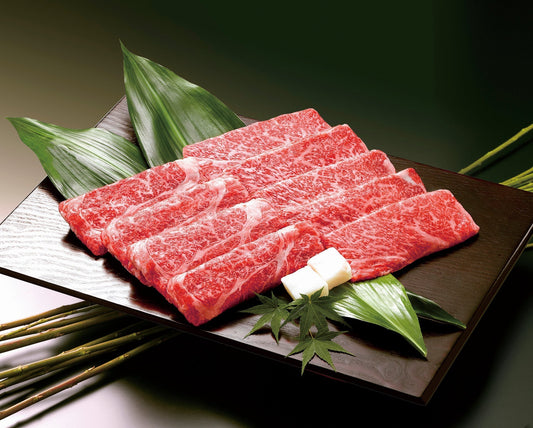As professionals in the beef industry, we understand that not all beef is created equal. While many consumers are familiar with the names "Angus" and "Wagyu," the nuances that differentiate these two breeds go far beyond surface-level attributes like marbling. Each breed represents a distinct approach to genetics, feeding protocols, meat grading systems, and market positioning.
In this article, I'll explore the fundamental differences between Angus and Wagyu beef, covering everything from genetic predisposition to intramuscular fat composition, finishing techniques, and sustainability considerations. This isn’t an elementary-level discussion—I assume you already have a solid grasp of beef production. My goal is to provide a technical, in-depth analysis that will be useful for ranchers, butchers, meat scientists, and chefs who demand precision in their understanding of premium beef.
Let’s begin by dissecting the genetic foundations of Angus and Wagyu cattle, as this is where many of their key differences originate.
Breed Genetics and Lineage
Angus (Aberdeen Angus) Breed Overview
Angus cattle originated in the northeast of Scotland and were bred for their ability to thrive in harsh, cold climates. The breed was selected primarily for its carcass quality, early maturity, and strong maternal traits. Over time, Angus became synonymous with high-quality beef, particularly in North America, where the American Angus Association played a significant role in establishing the Certified Angus Beef (CAB) program.
From a genetic standpoint, Angus cattle are naturally polled (hornless) and possess a moderate frame size. Their marbling potential is strong, though not nearly as exaggerated as Wagyu. One of the biggest genetic advantages of Angus is its muscle-to-fat ratio, which enables efficient growth and a well-balanced yield. This makes them particularly well-suited for high-efficiency feedlot finishing, which maximizes weight gain within a shorter time frame.
In the U.S., Black Angus is more dominant than Red Angus, though both share similar carcass characteristics. Black Angus has become the breed of choice for premium beef programs due to its ability to consistently grade USDA Prime or upper Choice, provided it undergoes proper finishing. Red Angus, while genetically similar, is often selected for crossbreeding due to its adaptability to warmer climates.
Wagyu Breed Overview
Wagyu cattle, on the other hand, have a vastly different genetic history. Originating in Japan, Wagyu were originally draft animals used for agricultural work. This selective breeding for endurance and slow muscle metabolism resulted in a higher concentration of intramuscular fat, now recognized globally as superior marbling.
The term "Wagyu" (和牛) literally translates to "Japanese cow," but within this broad category, there are four major strains: Tajima, Kedaka, Fujiyoshi, and Shimane. The Tajima strain, which produces Kobe beef, is the most prized due to its exceptional marbling. Wagyu genetics emphasize smaller muscle fiber bundles, leading to increased tenderness and a distinctive buttery texture.
Unlike Angus, Wagyu cattle mature more slowly and require extended feeding periods to fully develop their characteristic marbling. Genetic studies have pinpointed the presence of SNP (single nucleotide polymorphism) variations that contribute to their superior fat distribution. One such gene, SCD1 (Stearoyl-CoA Desaturase 1), plays a key role in converting saturated fats into monounsaturated fats, which significantly affects the mouthfeel and health profile of Wagyu beef.
Another major difference is that fullblood Wagyu cattle maintain strict lineage tracking in Japan, with a closed genetic pool. In contrast, American Wagyu is frequently crossbred with Angus to improve carcass yield while retaining some marbling characteristics.
Growth, Feeding, and Finishing Protocols
Angus Cattle Feeding Strategies
Angus cattle are typically raised on pasture before entering a feedlot finishing phase. The most common feeding systems include:
-
Grass-fed Angus: Cattle that are finished entirely on forage, which results in leaner meat with a more pronounced beef flavor.
-
Grain-finished Angus: Cattle spend 90–150 days on a high-energy diet (typically corn-based) to maximize marbling and carcass quality.
Feed conversion efficiency (FCE) is a critical factor in Angus production. Because they reach market weight faster than Wagyu, their feed efficiency is higher, reducing overall input costs. The typical slaughter weight for Angus ranges between 1,200 and 1,400 lbs, with a finishing age of 14–20 months.
Wagyu Cattle Feeding Strategies
Wagyu feeding protocols are far more intensive and prolonged. The Japanese feeding system for Wagyu can last 24 to 36 months, with a high-energy ration designed to promote slow and consistent fat deposition.
A standard Wagyu finishing diet includes:
-
Corn, barley, and wheat bran to increase energy density.
-
Rice straw or hay for fiber, preventing digestive issues.
-
Oils and beer mash to enhance the fatty acid profile.
One unique characteristic of Wagyu production is its reliance on oleic acid-rich feeds. Oleic acid (a monounsaturated fat) contributes to Wagyu’s lower melting point, which gives it a characteristic "melt-in-your-mouth" experience. However, this extended feeding regimen significantly increases costs, often 2–3 times higher than traditional Angus finishing.
Meat Composition and Quality Metrics
Marbling: A Scientific Perspective
Marbling is where Wagyu dramatically outperforms Angus. Wagyu beef achieves a BMS (Beef Marbling Score) of 8–12, while even the highest-quality Angus typically maxes out at BMS 4–6.
The structure of Wagyu marbling is also finer and more evenly distributed, while Angus marbling appears in thicker streaks. This finer marbling influences not just appearance but also the dispersion of fat during cooking, which affects tenderness and juiciness.
Fat Composition and Sensory Attributes
One of the biggest selling points of Wagyu is its higher proportion of unsaturated fats, particularly oleic acid. Angus, while well-marbled, contains a higher percentage of saturated fat, leading to a more robust mouthfeel but a firmer texture.
Tenderness and Texture
Wagyu’s small muscle fiber bundles create a softer texture compared to Angus. Additionally, Wagyu has lower collagen content, which further contributes to its tenderness.
Economic and Market Considerations
Global Demand for Angus vs. Wagyu
The economic model for Angus beef relies on high-volume, efficient turnover, whereas Wagyu focuses on ultra-premium pricing and exclusivity. The average price per pound of USDA Prime Angus hovers around $10–$15, while A5 Wagyu can fetch $100–$200 per pound.
Production Costs and Profitability
While Wagyu commands higher prices, its extended feed cycle, specialized diet, and longer time to maturity reduce overall efficiency. Angus, being faster-growing and higher-yielding, maintains a higher return on investment (ROI) per acre.
Meat Grading Systems and Standards
USDA Grading (Primarily for Angus)
The USDA beef grading system plays a significant role in how Angus beef is classified and marketed, particularly in the United States. It is primarily based on two key factors: marbling and maturity. The three highest quality grades under USDA standards are:
-
USDA Prime – The highest quality designation, characterized by abundant marbling, primarily derived from grain-fed cattle. This grade represents the top 2–3% of all beef in the U.S. market and is a common classification for premium Angus beef.
-
USDA Choice – A step below Prime, still containing moderate to high marbling. This is a dominant classification for high-quality Angus programs.
-
USDA Select – A lower level of marbling, typically leaner and less tender than Prime or Choice.
Yield grading also factors into USDA classification, measuring muscle-to-fat ratio and cutability. Since Angus is often grain-finished, a well-managed Angus carcass can consistently achieve USDA Prime or upper Choice status, making it highly desirable in the premium beef segment.
Japanese Meat Grading (Wagyu)
Wagyu follows a far more stringent grading system than USDA beef. The Japanese Meat Grading Association (JMGA) employs a dual-axis evaluation system, which considers both yield (A–C) and quality (1–5). The highest possible grade, A5, is what many consider the pinnacle of beef quality.
Key Components of Wagyu Grading
-
Beef Marbling Score (BMS): Ranges from 1 to 12, with A5 Wagyu requiring a BMS of 8 or higher.
-
Beef Color Standard (BCS): Evaluates the meat's redness, ensuring a deep, rich color.
-
Beef Fat Standard (BFS): Analyzes fat brightness, luster, and oiliness.
-
Firmness and Texture: Ensures that the beef maintains structural integrity despite high marbling.
Japanese grading is meticulous because Wagyu’s premium price tag requires absolute consistency. Even within A5, higher BMS scores (10–12) are considerably rarer and fetch astronomical prices.
International Grading Comparisons
Globally, different grading systems attempt to account for regional feeding practices, climate, and genetics. Some key systems include:
-
Australia’s Meat Standards Australia (MSA) system, which considers eating quality, marbling, and pH balance. Australian Wagyu often falls under this system.
-
European Union Grading (EUROP System), which focuses more on carcass yield and leanness, making it less favorable for highly marbled beef like Wagyu.
Crossbreeding Implications on Grading
American Wagyu, which is typically Wagyu-Angus crossbreeding (F1-F4 generations), presents unique grading challenges. Many American Wagyu producers use both USDA and Japanese grading systems, but since purebred Wagyu levels of marbling are difficult to achieve, American Wagyu often maxes out around BMS 6–8, which still outperforms the vast majority of USDA Prime beef.
Economic and Market Considerations
Global Demand for Angus vs. Wagyu
The global demand for premium beef continues to grow, but Angus and Wagyu occupy different segments of the market. Angus beef, due to its widespread production and accessibility, dominates in high-end steakhouse chains, premium grocery stores, and food service industries. It is well-positioned in the $10–$20 per pound range.
Wagyu, however, is a luxury product. A5 Wagyu, particularly from Japan, commands $100–$200 per pound, often exclusive to fine-dining establishments, luxury hotels, and specialty butchers. The market is smaller but highly lucrative.
Comparative Price Points
-
USDA Prime Angus: $10–$15 per pound
-
Upper Choice Angus: $7–$10 per pound
-
American Wagyu: $30–$80 per pound, depending on marbling
-
Japanese A5 Wagyu: $100–$200 per pound
Even though Wagyu fetches higher premiums, its extended feed cycle, specialized diet, and lower yield percentages per carcass make it significantly more expensive to produce.
Production Costs and Profitability
Wagyu is expensive to raise due to its longer finishing period (24–36 months), specialized feed, and increased labor costs. The tradeoff is that producers can make up the cost through premium pricing, but it requires the right market positioning.
In contrast, Angus has a shorter cycle (14–20 months) and benefits from higher carcass yield efficiency, making it a more predictable and scalable beef operation.
Sustainability and Environmental Impact
Feed Conversion Efficiency and Carbon Footprint
One of the biggest sustainability debates in beef production revolves around feed efficiency and methane output. Angus cattle, due to their faster growth and shorter finishing periods, are often considered more environmentally efficient than Wagyu.
Wagyu cattle, due to their extended finishing phase, produce more methane emissions per animal and require significantly more resources (feed, water, land). Some Wagyu producers are experimenting with precision nutrition strategies, such as:
-
Fermentation-based feeds to reduce methane production.
-
Seaweed-based additives to lower digestive emissions.
-
Genetic selection for low-methane Wagyu strains.
Grass-Fed vs. Grain-Fed Sustainability
Grass-fed beef is often considered more sustainable due to its lower input requirements, but it results in leaner meat and lower marbling scores. This presents a challenge for Wagyu, where grain-finishing is necessary to develop its signature high-BMS marbling.
For Angus, grass-fed finishing is a viable model for sustainability-focused producers. However, regenerative grazing practices, which emphasize rotational grazing, soil health, and carbon sequestration, may offer the best of both worlds.
Culinary Applications and Consumer Experience
Best Cooking Methods
Cooking methods vary dramatically based on the fat composition of each beef type:
-
Angus: Best suited for high-heat grilling, roasting, and smoking, as it has a firmer muscle structure.
-
Wagyu: Benefits from low-heat cooking techniques, including sous vide, teppanyaki, and searing at lower temperatures to prevent excessive fat rendering.
Flavor Profile Comparisons
-
Angus: Bold, beef-forward taste due to its higher protein-to-fat ratio.
-
Wagyu: Buttery, umami-rich flavor due to its intense marbling and high monounsaturated fat content.
Aging Potential
Both beef types respond differently to dry-aging:
-
Angus: Develops deeper nutty, earthy flavors after 30+ days of dry aging.
-
Wagyu: While Wagyu can be aged, its high-fat content limits enzymatic breakdown, making dry-aging less necessary for flavor development.
The Future of Angus and Wagyu Beef
Selective Breeding and Genetic Advancements
With advancements in genomics and selective breeding, producers are working to improve both breeds:
-
CRISPR-based gene editing for improved marbling in Angus.
-
Hybrid Wagyu-Angus crossbreeds that balance marbling with higher carcass yield.
Market Trends and Consumer Preferences
The future of premium beef will be shaped by:
-
Increased demand for direct-to-consumer beef sales.
-
Higher interest in sustainability and ethical meat production.
-
Expanding Asian markets for high-end beef consumption.
Alternative Proteins and the Beef Industry
The rise of lab-grown and plant-based meats presents challenges for high-end beef, but Wagyu and Angus maintain an advantage due to their premium status and sensory superiority.
Final Thoughts
Both Angus and Wagyu represent the pinnacle of premium beef, but they serve different economic, culinary, and sustainability purposes. Angus is efficient, scalable, and widely available, making it the backbone of high-quality Western beef markets. Wagyu, with its ultra-premium marbling, extended finishing times, and exclusivity, remains the gold standard for luxury beef consumers.
For industry professionals, the choice between Angus and Wagyu comes down to market positioning—mass premium efficiency vs. ultra-premium exclusivity. Regardless of your approach, understanding the science, economics, and sustainability factors behind these breeds is key to making informed, strategic decisions in the evolving beef industry.
Experience the Pinnacle of Wagyu with Destination Wagyu
At Destination Wagyu, we understand that true connoisseurs of fine beef appreciate the difference between premium Angus and the unparalleled indulgence of authentic Wagyu. As a brand committed to delivering the pinnacle of Wagyu excellence across the United States, we take pride in sourcing only the finest cuts from world-renowned producers, including Miyazaki, Kobe Wine, Kagoshima, and Stone Axe. Our dedication to quality means that every cut—whether it's a succulent ribeye, an indulgent tomahawk, or a buttery A5 striploin—meets the highest standards of marbling, tenderness, and flavor.
For those who have experienced top-tier Angus and are ready to elevate their steak experience, Wagyu offers an entirely new level of luxury. The intricate webbing of fine-grained marbling, the unmatched umami richness, and the melt-in-your-mouth texture set Wagyu apart as the gold standard in beef. Whether you’re a chef seeking the perfect cut for your restaurant or a home gourmand who demands nothing less than the best, Destination Wagyu is your trusted source.
We offer curated gift boxes, tailored subscription services, and concierge-level support to ensure that every order delivers an extraordinary dining experience. With nationwide shipping and impeccable quality assurance, we make it effortless for you to enjoy authentic Wagyu, straight from Japan’s most prestigious farms to your doorstep.
At Destination Wagyu, we believe that great taste is not just a preference—it’s a way of life. Experience the pinnacle of beef today and discover why our customers trust us as the premier source for the world’s finest Wagyu.
Order now and taste the difference—because you have great taste.
